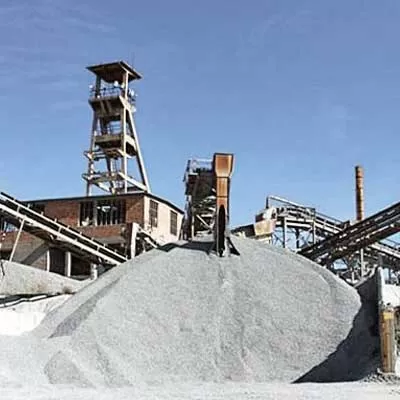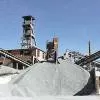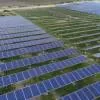The value realisation for the construction sector is coming in three different ways, each with its set of technologies, tools, systems and processes that lead to specific value maximisation, elaborates AMRITA CHOWDHURY.The construction industry, whether operating at the building level, infrastructure level, or city level, has undergone significant changes over the past decade, and the pace of change has only intensified in the past year. Opaque operating models are giving way to digitalisation and transparency in every aspect of the industry. The value realisation for the sector is coming in three different ways, each with its set of technologies, tools, systems and processes that lead to specific value maximisation. 1. Connected stakeholder ecosystemsEvery stakeholder and their interactions and service provision to building and construction has been digitalised and automated. Architects, urban planners, designers have long been using tools and technologies. The use of 3D modeling and visualisation, AR/VR platforms and drone mapping are creating intuitive means to fast-track the design iteration process and reduce errors. Innovation has been happening in building materials and technologies for smart logistics and inventory management, which is digitalising the procure-to-pay cycles and reducing the cost and sustainability footprint of the industry. Infratech is being included into civil construction, and information, communication, and operational tech hardware and software solutions are being integrated at the design stage itself.The industry uses the services of a network of internal and external third party providers and managers. The combination of mobile and enterprise applications, connectivity, and IoT devices and variables is connecting these people together. Unified frameworks and digital and AI/ML tools allow seamless construction, management and optimisation of built spaces. The sales process is becoming highly digital with the use of customer relationship management platforms, channel management applications, and digital sales aids that blend AR/VR, 3D visualisation, audio, video and digital. The governance and financial mechanisms have evolved as well. Government bodies have digitalised and permissions, access rights and payment mechanisms are increasingly digital. Regulators are moving towards real-time sensor-based monitoring and centralised digital reporting on effluents and emissions, aiming to improve sustainability metrics. The users, in both the customer and citizen persona, have become digitally-savvy and experiential. The connected and sentient building, infrastructure, and city ecosystem increasingly allows for connected living where many services can already be accessed digitally. 2. Connected life-cycle management The construction industry is using digital and automation technologies at every stage of projects – from design to monetisation of building, infrastructure or city systems. Ingredient technologies such as IoT, AI, blockchain, distributed computing, edge and mesh intelligence, cloud computing, big data analytics and data visualisation are allowing the industry to plan better and act predictively. The design phase, in addition to using design and planning tools and technologies, is increasingly adopting concepts of wellness, Biophilia, and blue-green integrations to blend technology and architecture.The build phase has significantly transformed through innovative construction materials and methods, as well as digital, cloud and sensor-based solutions to monitor staff, progress, audits and errors in construction. The entire land records management system in the country has been digitalised and plans are underway to use drone based mapping to catalogue all assets and sites at a national level. The sell phase is using technologies and platforms that have disintermediated some ecosystem partners and aggregated others, increasing the flow of information, communication, validations, and transactions. From marketing to site visits to legal documentation and commercial transactions, every step has been digitally transformed through a combination of AR/VR, AI/ML, digital and cloud technologies. The operate phase is seeing newer models of maintenance and management of assets over the long term. TMultiple automation and real-time monitoring systems and solutions – whether fully integrated or point solutions, are enhancing visibility and improving efficiency of operational performance. The experience phase ensures an interplay of operational and service related systems and technologies allow the users to better access services at building, infrastructure or city level. There is a lot of emphasis on enhancing customer experience by reducing wait times, improving service levels, creating areas and systems for interaction and engagement, and delivering a better quality of work or life to the end-user. The monetisation phase is increasingly at the top of mind of administrators, owners and operators of construction assets. Long return on investment cycles and complex modes of deployment of public and private capital predicate focus on easing the flow of money and identifying multiple modes of monetisation to ensure that projects can succeed. Value-added services through retail, advertising, data or service-based use cases are allowing for recurring revenues to be generated. Many of these services can be digitally conceptualised, delivered and managed.3. Connected systems and servicesBuildings and infrastructure spaces are increasingly envisioning themselves as an interconnected system of functions, utilities and services, all managed centrally and digitally through a building level control room or an infrastructure or city level integrated control and command center. The set of technologies first adopted for smart cities – such as networking and connectivity; smart management of water, waste, lighting, power, sewage, air quality and emissions; smart access to services and retail; interconnected mobility, parking, and traffic management; and managing request-response systems and on-demand servicing and issues management – are increasingly becoming important for buildings and infrastructure projects. Transport hubs are reimagining themselves as microcities. Road assets are creating logistics hubs and multiple digital monetisation channels. Buildings are transforming into mixed use spaces that are accessed and managed digitally. On-demand, surge, discounted pricing mechanisms rely on complex algorithms and predictive forecasts. Multiple indices and standard comparative metrics are being considered by users, governments, regulators and financiers of patient long-term capital. At the building level, Green ratings and Well Building standards are being measured and reported, and creating methods of differentiating premium and non-premium buildings. Global Infrastructure rankings rate countries in the quality and density and access of road, transport, utilities, and other major infrastructure systems and projects. Ease of Living Index and Sustainable Development Goals create the benchmarks to measure and monitor the performance and impact of city systems. Increasingly, gamification through Swachh Survekshan, Municipal Performance Index, and other city, state, and national level assessments is creating awareness and improving service levels. The indices themselves rely on a set on technology inclusion within projects and technology systems to aid performance measurement. At Gaia, we have been engaged with this ecosystem in many ways. Our Ops Tech solution stack blends Internet of Things, mobile and enterprise applications, Artificial Intelligence and Machine Learning, and data analytics to provide data as a service and intelligent solutions to manage assets, people, processes and operations. These solutions have been deployed for clients at the building, infrastructure and city levels, and bring transparency and accountability into multi-party operations. Our Design & Advisory practice creates technology blueprints, detailed projects reports, and engaged in end to end implementation monitoring and program management. The construction industry is revitalising itself with a focus on value delivery and value realisation at every stage in the life-cycle of projects and for every stakeholder. While the specific benefit being delivered is unique in each case, what connects this transformation is continued focus on digital automation. About the author: Amrita Chowdhury is Co-founder and CEO, Gaia, an infra-tech firm providing solutions and technology advisory. She serves as an Independent Director on the boards of Mahindra Lifespaces, Mahindra World City Jaipur, Mahindra Homes, Nesco, and Simmonds Marshall. She holds seven US patents for semiconductor manufacturing. Chowdhury has worked in strategy consulting in the US and Australia. She is an alumna of IIT Kanpur, Berkeley, and Carnegie Mellon.


















